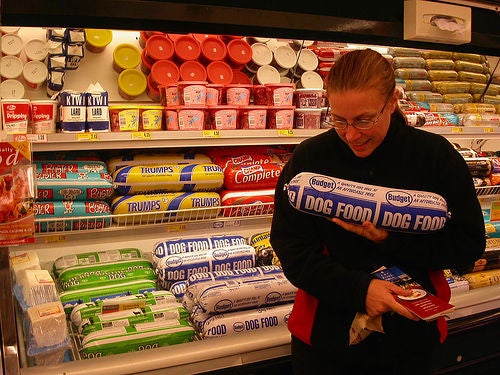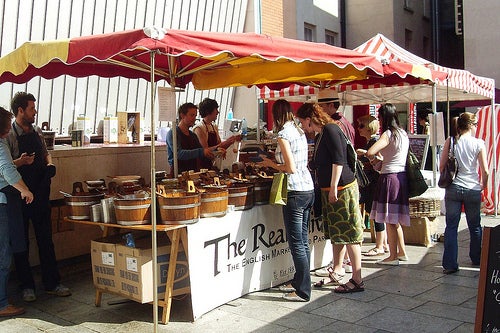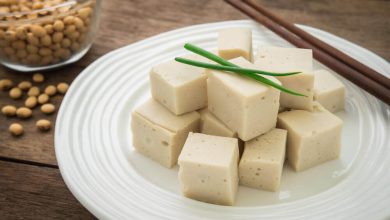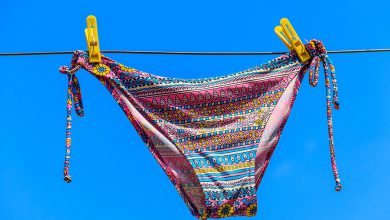8 Tips To Distinguish Between More And Less Healthy Foods

Are you clear about which foods are healthy and which are not so much? In this article we tell you how you can check this information to choose the best foods for you and your family.

There are times when we think that one dish is healthier than the other and we are wrong. Many are the myths that revolve around food and above all, misinformation. Therefore, we want to tell you how to know if it is healthy food or not.
Sometimes we think that something is healthy (or not) out of habit or out of concept. It may also be that we get carried away by the colors, the labels or because it is in a certain place in the market. Discover in the following article the ways to determine when a food is healthy and when it is not. Take a pencil and paper and make a note. Surely, you will be surprised.
What foods are healthy and what are not?
First of all, we must bear in mind that our body needs different types of nutrients to be able to develop properly, stay healthy and have energy to go to work, play sports, or study. In general, a balanced diet is considered to come from five food groups:
- Dairy
- Those that offer us protein (such as meat, egg or fish)
- The fruits
- The cereals
- The vegetables.

Balanced diet
According to the United States Department of Agriculture, it is recommended that vegetables predominate on the plate and fruits, in desserts. On the other hand, it is advisable to regularly consume cereals, mainly whole grains, and moderate the consumption of trans fats, which can be found in products such as cakes, cookies, sugary drinks, salty or precooked foods.
Always choose natural products to packaged, meat or farm chicken. Skip ready-made foods like hamburgers. The pace of life and obligations may not leave you too much time to cook healthy. So if you usually buy ready-made food, you can find healthier options than pizzas for example.
8 tips to determine if a food is healthy or not

1. Pay attention to calories
You can read this on the package label at the time of purchase. It’s also good to know how many of those calories come from less healthy fats.
Remember that fats are necessary for the body, always opting for the so-called good fats, such as omega-3 fatty acids. For a diet of 2,000 calories a day, you should consume a maximum of 65 grams of fat.
2. Take a look at the type of fat in the product

Avoid trans fats and saturated fats as much as possible. Consuming more than 1 gram of trans fat per day is not advised, according to data cited in Nutrients Magazine .
3. Avoid excess sodium (salt)
This means that it would be advisable to reduce the consumption of fried foods and snacks . A teaspoon of salt per day is recommended, although many people end up overdoing it. Check the sodium content of your food.
4. Check that the products provide vitamins, fibers, iron and calcium
They are considered rich in these nutrients which provide at least 20% of the recommended values. They do not have to count all of these together, but one or two predominantly.
5. Read well if the food contains added sugar
Those with added sugar express it on the label in different ways: high fructose corn syrup, dextrose, maltose, sucrose, honey, concentrated fruit juice, maple syrup, or fructose.
The order in which the ingredients appear on the label is in relation to their quantity. The one you read first on the list will be the most abundant, the second the next, and so on. If salt, fat or sugar are among the “top rankings “, choose another.

- If you have the idea of buying organic products because you consider them to be healthy foods, learn well to read the labels and the packaging, because there may be some tricks.
- In the event that you consume or buy prepared food, pay attention to how they are cooked, that is, the type of cooking. Try to choose roasted or baked and avoid fried.
Additional Recommendations

- First of all, don’t be fooled by green labels or those with pictures of fruits, because this does not mean they are healthy.
- Also, be careful with the amount of transgenic foods that are sold in the markets. If all the ingredient names are impossible to read on the label, it is because it is a product based on chemicals, dyes, preservatives, etc. The same if they have numbers or letters next to each ingredient.
- Also pay attention to children’s menus because they are usually not very healthy.
- Finally, if you have doubts about a food or component, it is better that you consult with a nutrition expert or that you reject buying it.
In conclusion
Buying healthy food in a store requires knowledge and dedication. Now that you know that foods can be more or less healthy, depending on the fat or sugars they contain, you can make better purchasing decisions.
For a good diet and, above all, healthier, we must take into account the different aspects discussed. In this way, we can see what amounts to consume and what we want to avoid in case of problems such as cholesterol.









